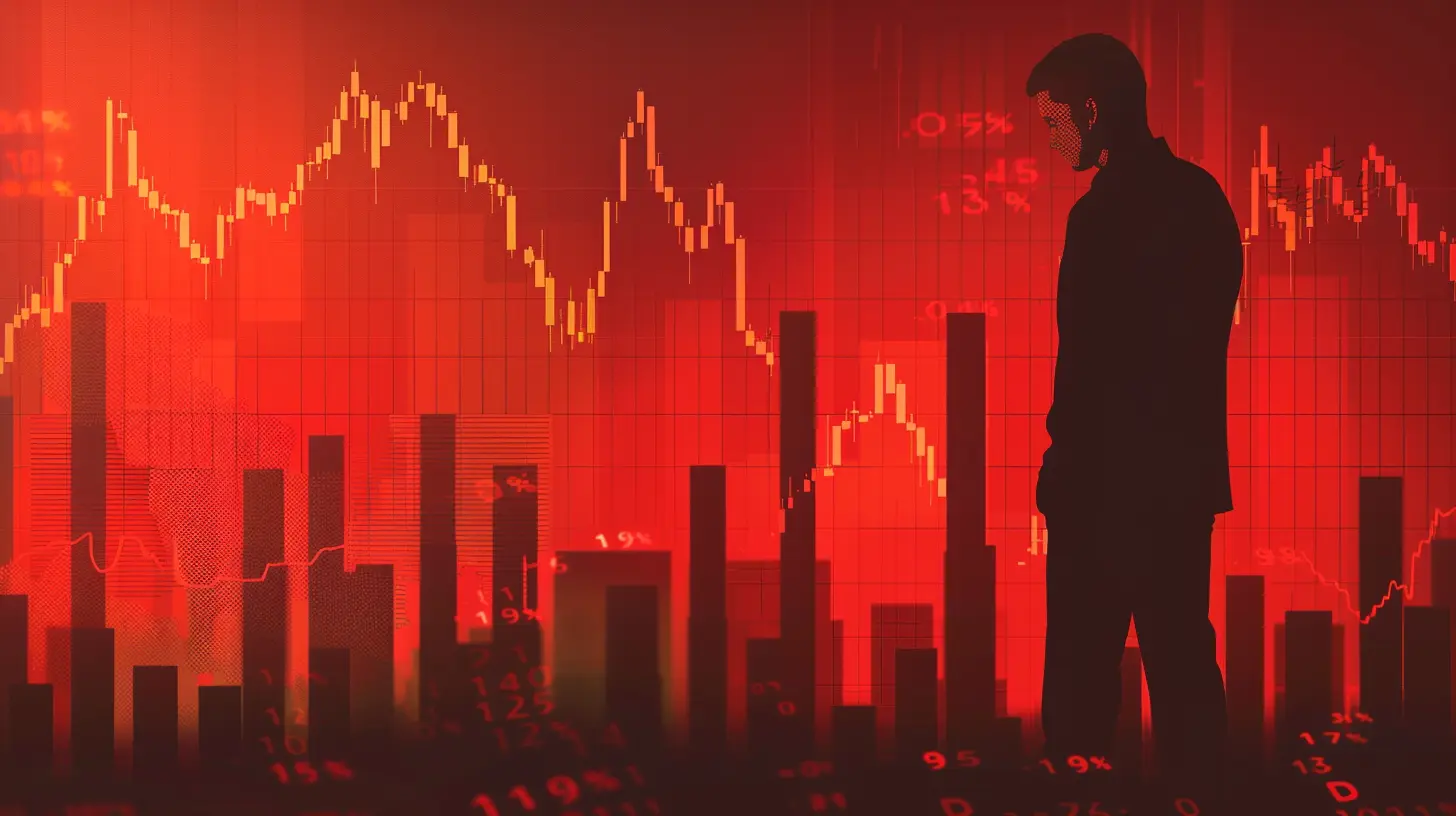Unemployment Rate Trends and What They Mean for Investors
5 November 2025
Let’s talk about something that seems dry on the surface but packs a real punch when it comes to your investment strategy — unemployment rate trends. Yep, that monthly number released with barely a whisper can shake up stock markets, spook investors, and even give Wall Street a cold sweat. And if you’ve ever wondered how those shifting digits can ripple through your portfolio, you’re in the right place.
This isn’t your typical economics class. We’re peeling back the curtain on unemployment data, how it affects the mood of the market, and what you, as an investor, should be watching for. Ready? Let’s dive deep into the mysterious world of unemployment rate trends — and decode what they really mean for your money.
What Exactly Is the Unemployment Rate?
Before we analyze trends, let’s make sure we’re on the same page.The unemployment rate is the percentage of the total labor force that is jobless and actively looking for work. Seems simple, right? But here's the twist: not all jobless people are counted. If someone gave up looking for work, they’re invisible to this stat. It's like a ghost in the data.
So while the unemployment number is helpful, it doesn’t tell the full story. It's like trying to understand a storm by just looking at the clouds. You need to dig deeper.
Why Investors Should Obsess Over This Number
Okay, you might be thinking, "Why should I care about unemployment when I’m just checking my portfolio on a Saturday morning?"Fair question. But here’s the deal — the unemployment rate is more than a number. It’s a signal. And smart investors read it like a cryptic message from the market gods.
Here's why:
- Consumer Spending Ties to Employment: When people have jobs, they spend. More demand = more profits = rising stock prices.
- Corporate Earnings: Businesses thrive when employment is high — more people working means more customers and a booming economy.
- Interest Rates: Central banks, especially the Fed, watch unemployment like a hawk. High unemployment? They might slash interest rates to stimulate the economy. Low unemployment? They could raise rates to cool things off.
So when the unemployment rate moves — up or down — it sets off a domino effect that touches everything from housing to retail to tech stocks.
A Historical Rollercoaster: Trends That Made Markets Scream
Let’s take a walk down memory lane. The unemployment rate has seen some wild chapters.The Great Recession (2008-2009)
Remember that time the world felt like it was financially imploding? Unemployment soared above 10% in the U.S. Investors panicked. Stock markets crashed. Safe haven assets like gold became the party everyone wanted to attend.The Pandemic Shock (2020)
In the blink of an eye, COVID-19 sent unemployment skyrocketing to nearly 15%. Industries came to a standstill. But here's the plot twist: despite the carnage, the stock market rebounded fast, thanks to massive stimulus from governments and central banks.Both of these crises showed us something powerful — unemployment trends can swing emotions, policies, and portfolios.
What Causes the Unemployment Rate to Change?
This is where things get spicy. The unemployment rate isn’t just floating randomly. It’s influenced by several economic forces that interact in weird and wonderful ways.1. Economic Growth
When GDP grows, companies need more hands on deck. So, they hire. Unemployment drops. Simple.2. Technological Disruption
Ever heard of robots taking jobs? It’s not science fiction anymore. Automation and AI can displace traditional roles, pushing jobless rates up in some sectors, even as new industries emerge.3. Government Policy
Stimulus checks, tax breaks, regulatory changes — all of these can either help businesses hire or slow expansion.4. Global Events
War, pandemics, supply chain shocks — stuff outside the economic text books. These black swan events can wreak havoc on employment numbers.Reading Between the Lines: When Good News Might Be Bad
Here's where it gets a little mind-bending.Sometimes, low unemployment isn't always great news for investors. Strange, right?
Wait, how? Let’s break it down:
- Tight Labor Market: Too few people looking for jobs means companies must offer higher wages. That squeezes profit margins.
- Fed Reaction: A hot job market often means the Fed gets nervous about inflation. So, they raise interest rates. And guess what? Higher rates usually make stock prices take a dip.
So as an investor, you’ve got to play chess, not checkers. You need to anticipate how data might influence policy, which influences markets.
The Unemployment-Inflation Tug-of-War: Welcome to the Phillips Curve
There’s this old-school idea called the Phillips Curve. It says there's an inverse relationship between unemployment and inflation. Like a seesaw — when one goes down, the other goes up.But, just like your favorite neighborhood diner, the rules don’t always apply anymore. In recent years, we’ve seen low unemployment and low inflation coexisting peacefully. So while the Phillips Curve gives us a starting point, don’t expect it to be your North Star.
Still, keep it in your toolbox when you're analyzing where the economy (and your portfolio) might be headed.
How Different Asset Classes React to Unemployment Spikes
Depending on your investment portfolio, unemployment changes can hit you in different ways. Let’s break it down:📈 Stocks
- High unemployment? Usually bad news. Consumers pull back on spending, earnings drop.- But… sometimes bad news is "good" if it means the Fed will lower rates.
💵 Bonds
- High unemployment often sends treasuries up. Investors flee to safety.- If the Fed cuts rates, bond yields drop and prices shoot up.
🏠 Real Estate
- Unemployment weakens housing demand.- But low mortgage rates (thanks to a softer economy) can offset this.
🌐 Commodities
- Less employment = lower demand = falling commodity prices.- But geopolitical tensions or supply chain issues can throw a wrench in that logic.
How Can You Use Unemployment Data in Your Investment Strategy?
Now that you understand the story behind the numbers, how do you actually use this info?1. Watch the Trend, Not Just the Number
One month of weird data doesn’t mean much. But a trend over 3-6 months? That’s gold. Look at whether unemployment is steadily rising or falling.2. Pair It With Other Indicators
Don’t go all-in just because unemployment dipped. Check wage growth, the participation rate, and inflation data. It’s like baking a cake — one ingredient doesn’t make the dish.3. Sector Rotation
When unemployment rises, some sectors take a harder hit than others. Consumer discretionary? Risky. Utilities and staples? More stable. Shift your focus accordingly.4. Think Long-Term
Short-term unemployment spikes can create buying opportunities for long-term investors. Remember March 2020? Those who bought the dip are smiling now.What to Watch in the Coming Years
The post-pandemic world has changed the job landscape. Remote work, AI, the gig economy — these aren’t just buzzwords. They’re reshaping how we work and, ultimately, how unemployment behaves.Investors should pay attention to:
- Hybrid work models: Could reduce geographic job gaps.
- Rise of freelancing: Makes unemployment harder to track and predict.
- Global outsourcing: More competition for domestic jobs.
- Automation: Might keep unemployment higher in traditional sectors.
Final Thoughts: Don’t Fear the Data, Master It
Unemployment rate trends are like the traffic lights of the economy. Green means go, red means stop, and yellow? Well, that’s the tricky one.As investors, our job isn’t to panic at every flicker of red. It's to understand what that flicker means in the larger context. So the next time you hear about a jump or dip in the unemployment rate, don’t shrug it off. Dig in, ask questions, and look at how the market might react — not to the number itself, but to what it implies.
Because in the end, the people who pay attention to these hidden signals? They’re the ones who get ahead of the curve — and stay there.
all images in this post were generated using AI tools
Category:
Economic IndicatorsAuthor:

Knight Barrett
Discussion
rate this article
1 comments
Christina Mendez
Unemployment trends significantly impact market sentiment and investment strategies' effectiveness.
November 9, 2025 at 4:13 AM

Knight Barrett
Absolutely, unemployment trends are crucial indicators that shape market sentiment and can significantly influence investment strategies. Understanding these trends helps investors make informed decisions.


